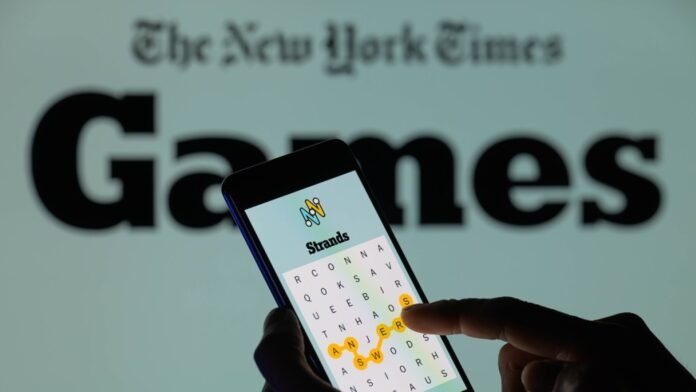The New York Times (NYT) has a rich history of engaging readers with word games, from Mastering Strands Hints classic crossword to the viral sensation Wordle. One of its latest additions, Strands, takes the traditional word search and elevates it with a unique twist. Designed for word puzzle enthusiasts, this game challenges players to think creatively while uncovering hidden words based on a given theme.
In this comprehensive guide, we’ll explore how Strands works, strategies for success, and its impact on the puzzle gaming community.
What is Strands?
Strands is a daily word game that blends elements of a word search with thematic problem-solving. Unlike standard word searches where words are placed in straight lines, Strands allows words to curve and bend, making it a dynamic and engaging challenge.
Each puzzle consists of a six-by-eight letter grid (48 letters total) and is centered around a specific theme. Players are given a clue that helps them identify hidden words related to the theme. The ultimate goal is to find all of these theme-related words, as well as the spangram, a special word or phrase that spans two opposite edges of the grid and encapsulates the puzzle’s theme.
How to Play Strands
Basic Rules
- Start with a Theme – Every Strands puzzle presents a thematic clue, such as “Types of Fruit” or “Famous Landmarks.”
- Find Words – Words are hidden within the six-by-eight grid. Unlike traditional word searches, words in Strands can bend, curve, and change directions.
- Identify the Spangram – One word (or phrase) in each puzzle serves as the spangram, stretching from one side of the grid to the other while summarizing the theme.
- No Overlapping – Words do not share letters, ensuring a unique solution to every puzzle.
- Use Hints Wisely – If players struggle, they can find non-theme words to earn hints that reveal letters of a theme word.
Winning Strategies for Mastering Strands Hints
1. Start with the Theme
Before diving into the grid, think about possible words that align with the given theme. If the theme is “Board Games,” words like chess, checkers, monopoly, and dice might be hidden within the puzzle.
2. Look for Common Letter Clusters
Certain letter combinations appear frequently in English words. Pay attention to common prefixes (pre-, re-, un-) and suffixes (-ing, -tion, -ed).
3. Identify the Spangram Early
Since the spangram stretches across the grid, locating it first can provide valuable context for the rest of the puzzle. Try to find long words that relate to the theme.
4. Experiment with Word Shapes
Unlike traditional word searches, words in Strands may bend and change direction. Don’t limit yourself to straight-line searches—try tracing letters in different patterns.
5. Use Non-Theme Words for Hints
If you get stuck, find any recognizable words in the grid. For every three non-theme words identified, the game provides a hint by highlighting letters in a theme-related word.
6. Work Backwards from Known Words
If you’ve already discovered some theme words, analyze their placement in the grid. The remaining words will likely fit within the available space without overlapping.
The Appeal of Strands
1. A Fresh Take on Word Searches
Strands offers a dynamic and engaging alternative to traditional word searches. The ability for words to bend in multiple directions adds a level of difficulty and excitement that sets it apart.
2. Daily Challenge Format
Like Wordle and the NYT Crossword, Strands updates with a new puzzle every day, ensuring that players have a fresh challenge to look forward to.
3. Perfect for Casual and Serious Players
Whether you’re a casual word game enthusiast or a dedicated puzzle solver, Strands provides a balanced experience with accessible gameplay and progressively challenging puzzles.
4. Encourages Cognitive Skills
Word games like Strands enhance vocabulary, pattern recognition, and problem-solving abilities. It’s both entertaining and mentally stimulating.
Common Mistakes to Avoid
1. Ignoring the Theme
The theme is the key to solving the puzzle. Instead of randomly searching for words, always keep the clue in mind.
2. Overlooking the Spangram
Since the spangram ties the puzzle together, ignoring it can make the game significantly harder. Identifying it early provides structure to your word search.
3. Not Using Hints Strategically
If you’re stuck, finding non-theme words is a great way to unlock hints. Use them strategically to reveal difficult words.
4. Focusing Only on Straight Lines
Remember that words in Strands can bend! If you’re only scanning in straight directions, you’ll likely miss hidden words.
Strands vs. Other NYT Word Games
Strands vs. Wordle
While Wordle is about guessing a secret five-letter word, Strands involves uncovering multiple words based on a theme. Strands requires more pattern recognition, while Wordle relies on deductive reasoning.
Strands vs. Spelling Bee
In Spelling Bee, players create as many words as possible using a set of letters. Strands, on the other hand, offers a structured puzzle with a single correct solution.
Strands vs. Crossword
NYT Crosswords are based on definitions and wordplay, whereas Strands relies on word search mechanics and thematic recognition.
The Future of Strands
Since its introduction in early 2024, Strands has quickly gained popularity among puzzle lovers. The New York Times has been known to refine and expand its games, so it’s possible that Strands will see new features, variations, or even competitive modes in the future.
Given its engaging format and daily challenge model, Strands has the potential to become a staple in the world of online word games, much like its NYT predecessors.
Final Thoughts
Strands is an exciting and innovative addition to the NYT’s puzzle lineup. With its unique blend of word search mechanics and thematic problem-solving, it offers a daily mental workout that appeals to both casual and experienced players.
By using strategic approaches—such as identifying the spangram early, leveraging hints wisely, and embracing the flexible word shapes—players can improve their skills and fully enjoy the challenge that Strands presents.


